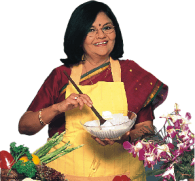Calories in Kadala Curry Recipe (Kerala Special Puttu Kadala Curry)
This calorie page has been viewed 60317 times

| Value serving | % Daily Values | |
| Energy | 226 kcal | 11% |
| Protein | 7.0 g | 12% |
| Carbohydrates | 25.3 g | 9% |
| Fiber | 12.21 g | 41% |
| Fat | 10.80 g | 18% |
| Cholesterol | 0.0 mg | 0% |
| VITAMINS | ||
| Vitamin A | 191.1 mcg | 19% |
| Vitamin B1 (Thiamine) | 0.2 mg | 11% |
| Vitamin B2 (Riboflavin) | 0.1 mg | 4% |
| Vitamin B3 (Niacin) | 1.3 mg | 9% |
| Vitamin C | 19.3 mg | 24% |
| Vitamin E | 0.3 mg | 4% |
| Folic Acid (Vitamin B9) | 75.7 mcg | 25% |
| MINERALS | ||
| Calcium | 90.3 mg | 9% |
| Iron | 2.1 mg | 11% |
| Magnesium | 75.4 mg | 17% |
| Phosphorus | 150.9 mg | 15% |
| Sodium | 39.2 mg | 2% |
| Potassium | 405.6 mg | 12% |
| Zinc | 1.2 mg | 7% |
Percent Daily Values are based on a 2000 calorie diet. Your daily values may be higher or lower depending on your calorie needs.

कड़ाला करी की कैलोरी के लिए कैलोरी - हिन्दी में पढ़ें (Calories for Kadala Curry, Kerala Curry for Appam, Puttu and Dosa in Hindi)
Click here to view Kadala Curry, Kerala Curry for Appam, Puttu and Dosa
Calories in other related recipes















